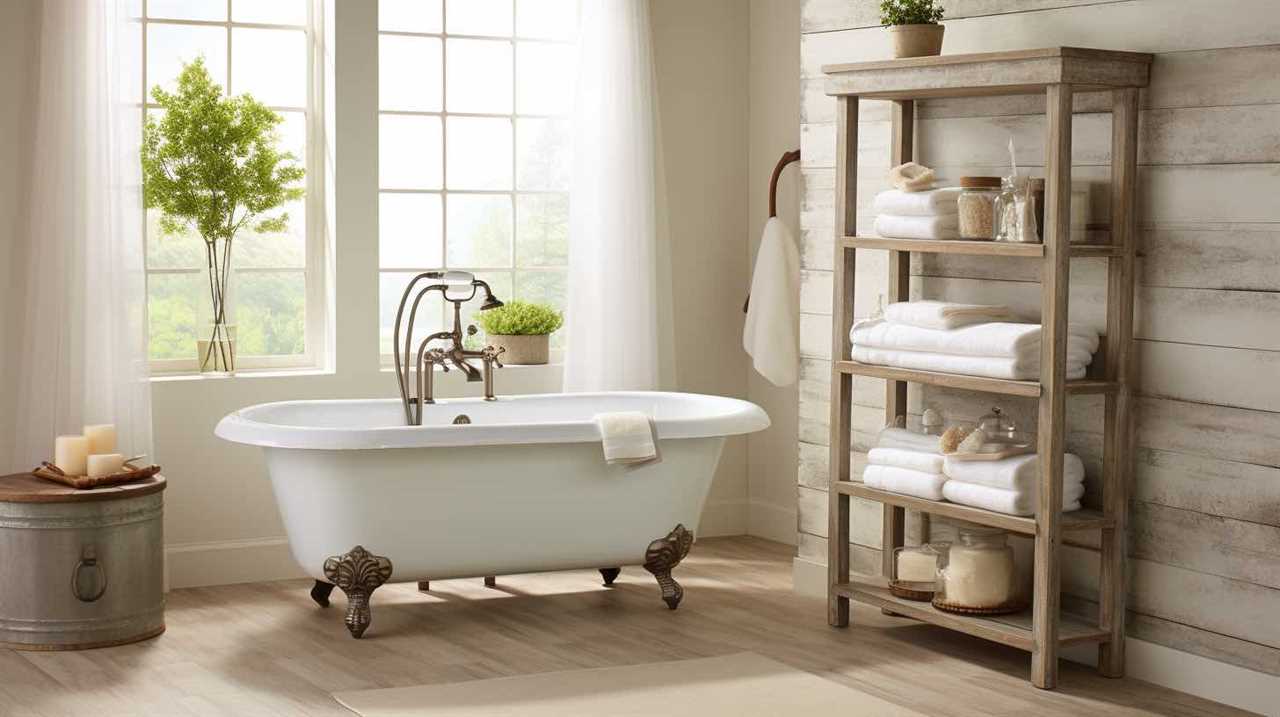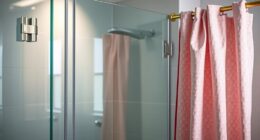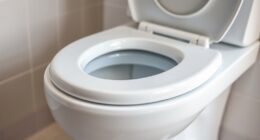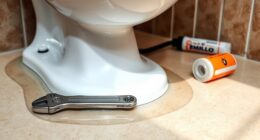Bathroom zones have a significant impact on our daily routines. The strategic placement of fixtures and outlets creates a harmonious balance as soon as we enter this sacred space.
But what exactly are bathroom zones? In this article, we will dive deep into the world of wet and dry zones, exploring their importance and their impact on our beloved fixtures.
Get ready to master the art of bathroom zone mastery!
Key Takeaways
- Bathroom zones divide the space based on electrical safety requirements.
- Designing functional zones enhances organization and efficiency.
- Wet zones require special attention to waterproofing and slip-resistant flooring.
- Fixture placement ensures safety and functionality.
Understanding Bathroom Zones
First, let’s briefly explain the concept of bathroom zones. When designing a bathroom, it’s essential to consider specific design considerations and safety regulations.

Bathroom zones divide the space into different areas based on the electrical safety requirements. These zones help ensure the safety of individuals using the bathroom and prevent any potential hazards.
The design considerations involve determining the placement of electrical fixtures and appliances in relation to water sources and potential moisture. Safety regulations dictate the minimum distance between electrical items and water sources to prevent electrical shocks and accidents.
It’s crucial to adhere to these regulations to create a safe and functional bathroom environment. Understanding the concept of bathroom zones is important as it lays the foundation for creating a well-designed and secure space for all users.
Importance of Bathroom Zones
To fully comprehend the significance of bathroom zones, let’s delve into why these designated areas are vital for ensuring the safety and functionality of a bathroom space.
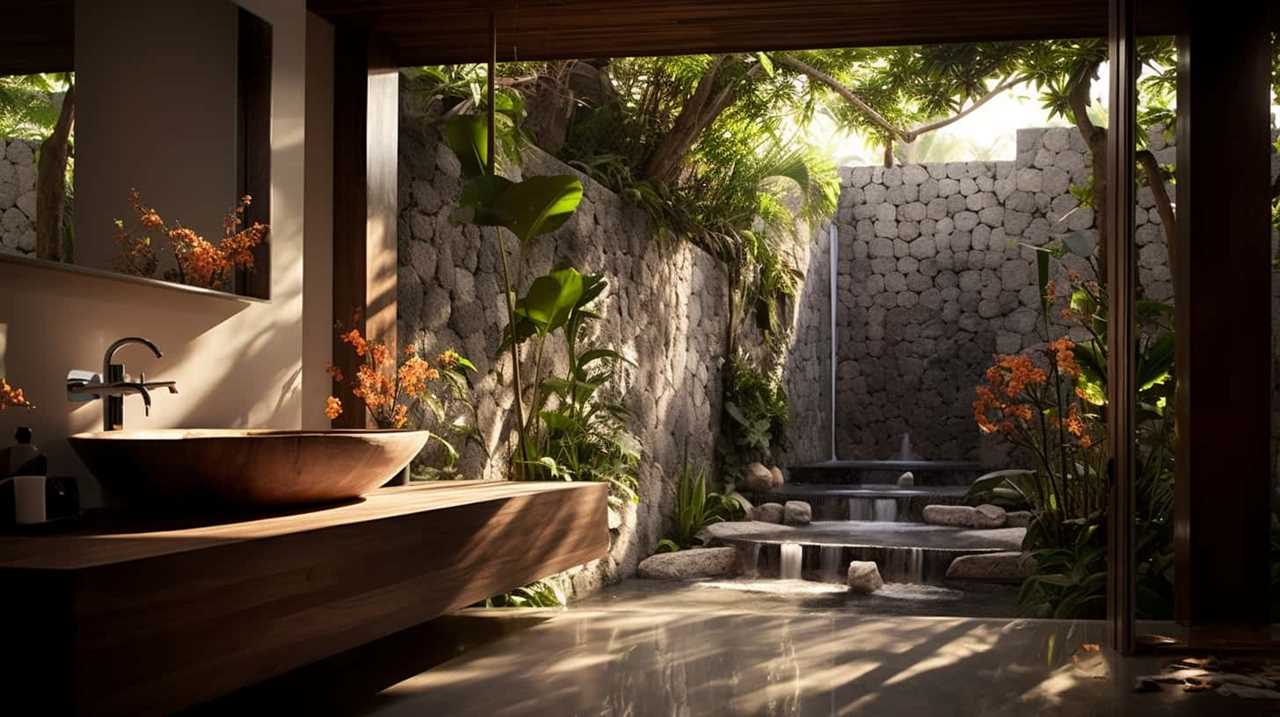
Designing functional bathroom zones offers numerous benefits, the foremost being organization and efficiency. By separating different functions within the bathroom, such as the shower area, vanity area, and toilet area, we create distinct zones that allow for smoother flow and use of the space. This not only enhances the overall functionality of the bathroom but also improves safety by reducing the risk of accidents and mishaps.
Additionally, separating bathroom zones helps in maintaining hygiene and privacy, as each area can be designed and equipped with the specific requirements and features needed for its intended purpose. Whether it’s a small bathroom or a large one, implementing well-designed bathroom zones can greatly enhance the user experience and elevate the overall aesthetics of the space.
Wet Zones and Dry Zones
When designing bathroom zones, one important distinction to consider is between wet zones and dry zones.
Wet zones, as the name suggests, are areas in the bathroom that are more likely to come into contact with water, such as the shower, bath, and sink. These areas require special attention to safety regulations and waterproofing materials to prevent water damage and ensure the longevity of the fixtures.

Safety regulations often dictate the installation of slip-resistant flooring and proper drainage systems to minimize the risk of accidents. Waterproofing materials, such as tiles, grout, and sealants, are used to create a barrier against water penetration and protect the underlying structures.
Impact of Bathroom Zones on Fixtures
The impact of bathroom zones on fixtures can be significant, particularly in wet zones where water exposure is more likely. Fixture placement plays a crucial role in ensuring the safety and functionality of the bathroom.
Safety regulations dictate that certain fixtures must be installed at specific distances from water sources to prevent accidents and potential damage. For example, electrical sockets and switches should be located outside wet zones to minimize the risk of electrocution. Additionally, faucets and showerheads must be placed in a way that prevents water from reaching electrical components.
These regulations not only protect individuals from harm but also safeguard fixtures from potential water damage. By adhering to these guidelines, bathroom designers and homeowners can create a functional and safe environment for all users.
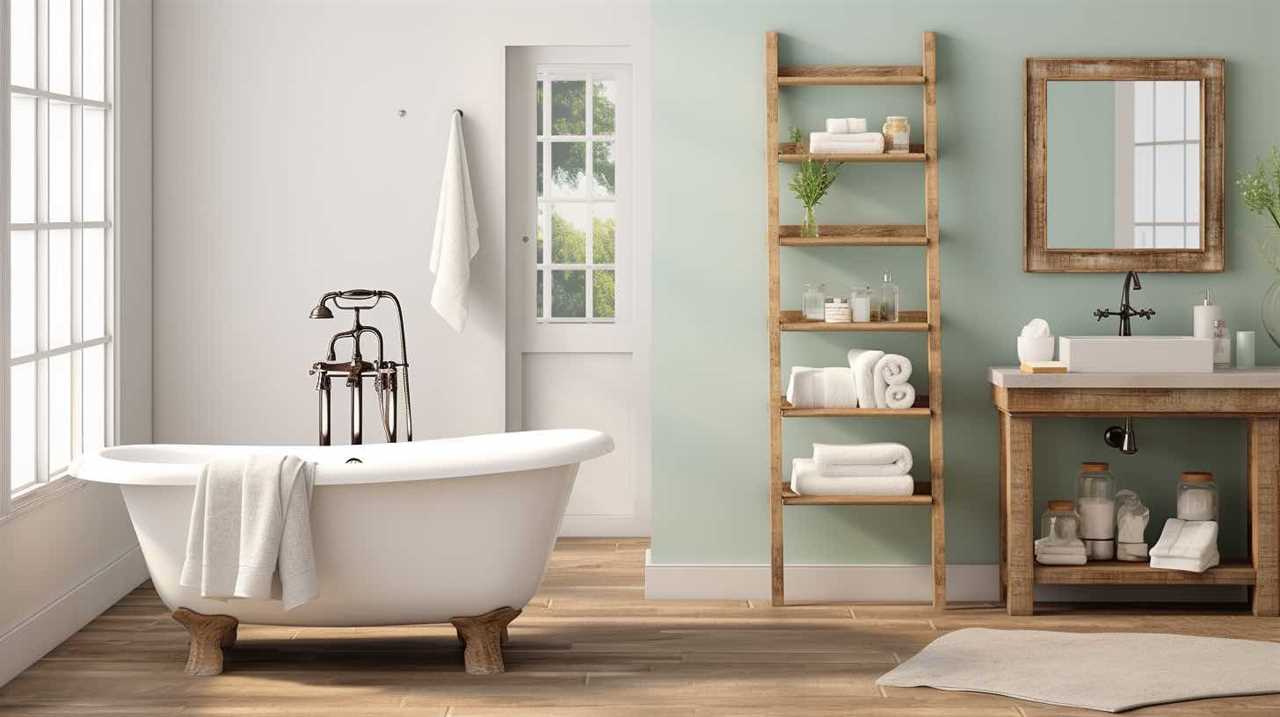
Placement of Electrical Outlets in Bathroom Zones
As we continue our discussion on the impact of bathroom zones on fixtures, it’s important to address the placement of electrical outlets in these designated areas. When it comes to electrical safety in the bathroom, code requirements play a crucial role.
The National Electrical Code (NEC) has specific guidelines to ensure that electrical outlets are safely placed in different bathroom zones.
In general, electrical outlets should be located outside of the bathroom zones, such as in the hallway or adjacent rooms. However, if an outlet needs to be installed within the bathroom zones, it must adhere to strict regulations.
For example, outlets in Zone 0, which includes the inside of the bathtub or shower, are prohibited. In Zone 1, which is the area directly above the bathtub or shower up to a height of 2.25 meters, only low-voltage outlets are allowed.
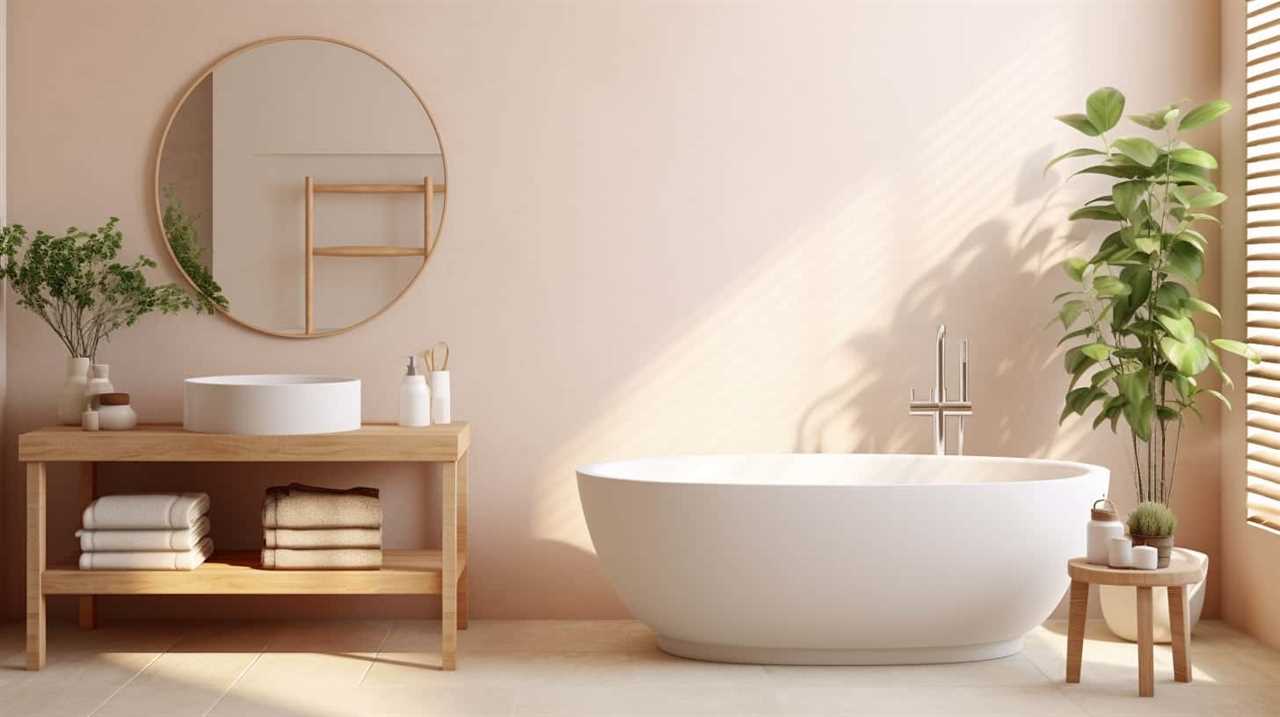
Frequently Asked Questions
Can I Install a Light Fixture in a Wet Zone if It Is Labeled as Waterproof?
Yes, we can install a light fixture in a wet zone if it is labeled as waterproof. However, it’s important to follow light fixture safety and wet zone regulations to ensure proper installation and avoid any potential hazards.
Are There Any Specific Regulations for the Placement of Towel Racks or Hooks in Bathroom Zones?
Are there specific regulations for towel rack placement in bathroom zones? We must consider the safety and convenience of users. It’s crucial to follow guidelines to ensure proper installation and prevent accidents.
Can I Have a Shaving Socket Installed in a Dry Zone?
Yes, you can have a shaving socket installed in a dry zone. However, it is important to consider heated towel rail safety and the placement of electrical outlets in the bathroom for optimal functionality and safety.
Are There Any Guidelines for the Placement of Mirrors in Relation to Bathroom Zones?
When it comes to guidelines for mirror placement in bathroom zones, it’s important to consider the proper location. Mirrors should be strategically positioned to enhance functionality and aesthetics, ensuring a well-designed and practical space.

Can I Install a Heated Towel Rail in a Wet Zone?
Yes, we can install a heated towel rail in a wet zone, but it must adhere to wet zone regulations. These regulations ensure the safe and appropriate installation of fixtures in areas with potential water exposure.
Conclusion
In conclusion, understanding bathroom zones is essential for creating a functional and safe space. Just like the different zones in a bustling city, each area in the bathroom serves a specific purpose.
Wet zones, like the shower and bathtub, require special attention to ensure proper waterproofing.
Dry zones, such as the vanity and toilet area, need to be strategically placed for convenience.

By considering the impact of bathroom zones on fixtures and carefully placing electrical outlets, we can create a harmonious and efficient sanctuary, where every zone works together seamlessly.

